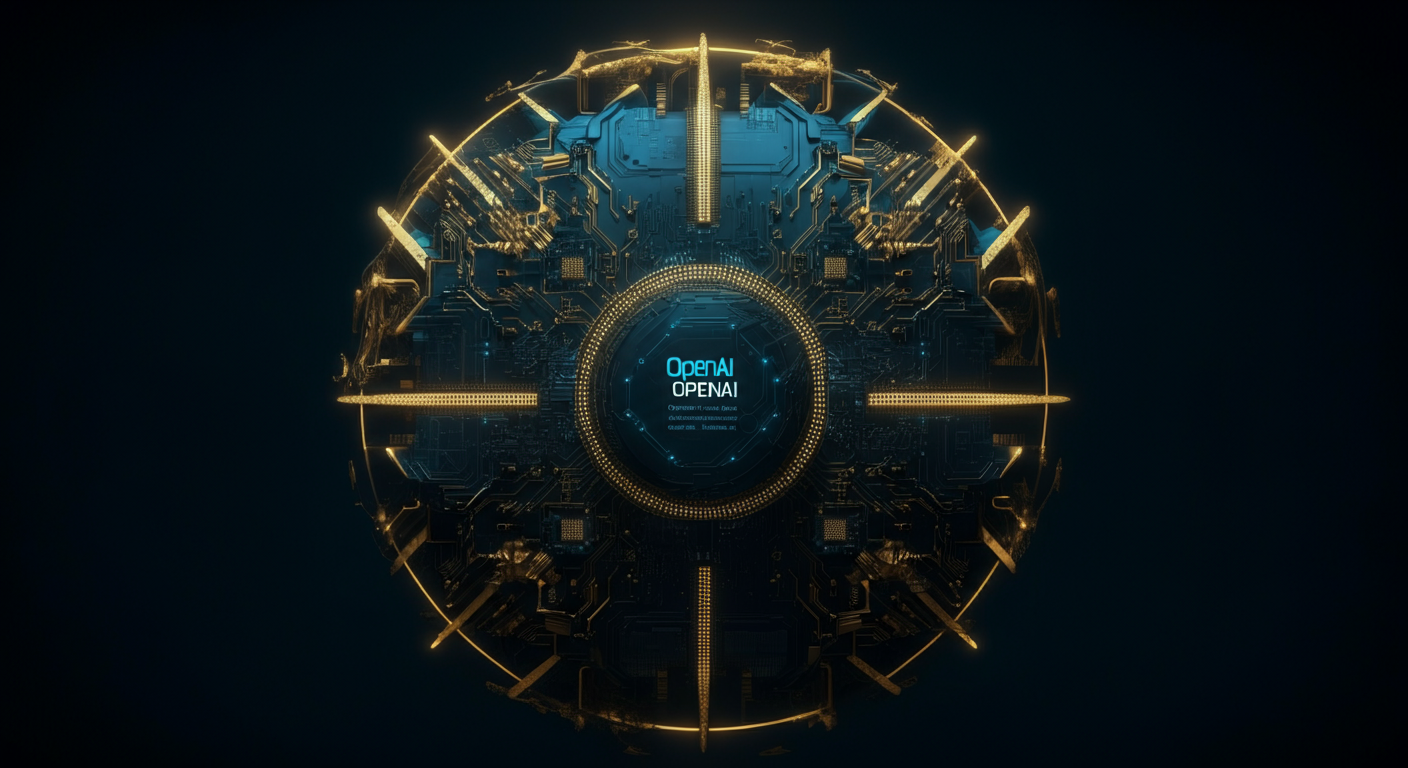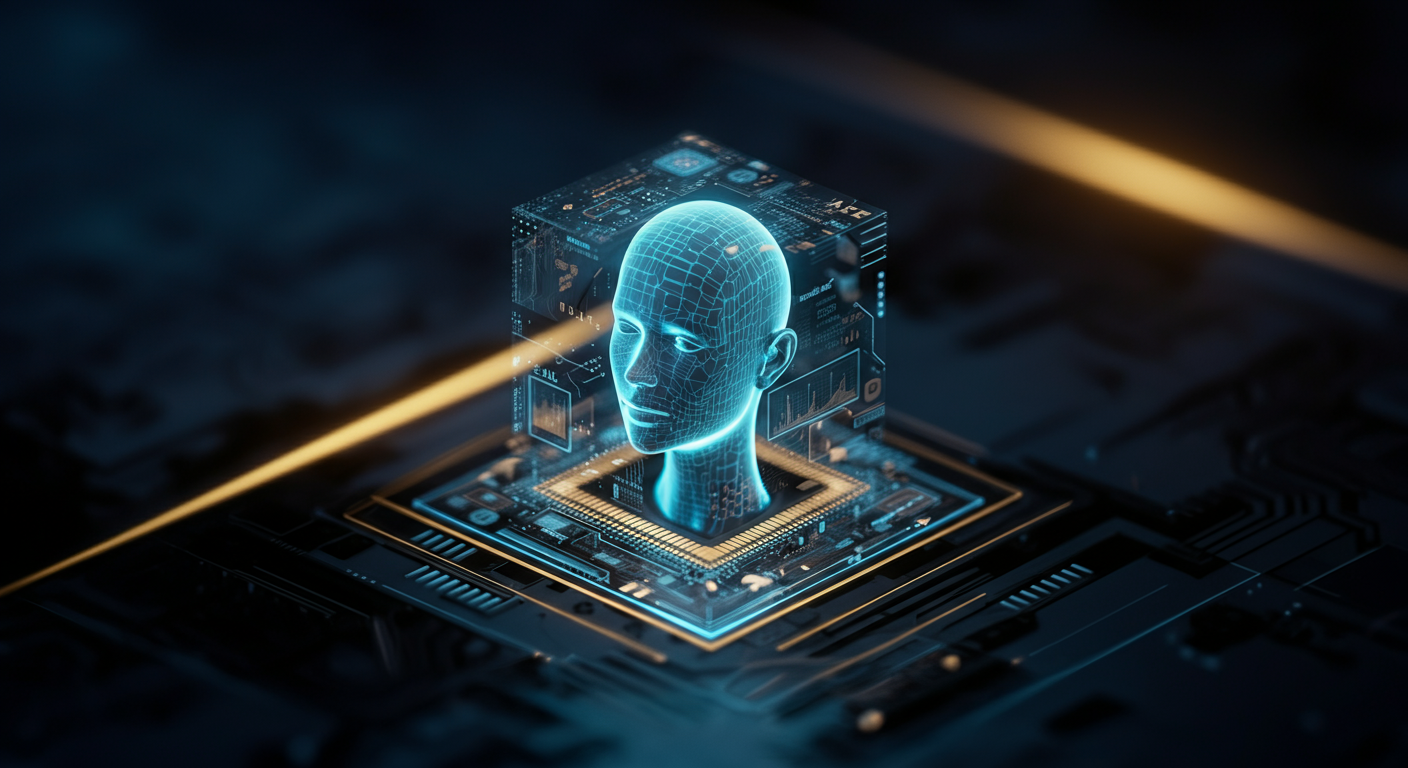Interpretable AI: Unveiling Circuits in Weight-Sparse Transformers

Introduction: The Quest for AI Transparency
In an era increasingly shaped by artificial intelligence, AI interpretability is no longer a luxury but a necessity. We're entrusting AI with critical decisions, from medical diagnoses to financial investments, and understanding how these systems arrive at their conclusions is paramount.
The Black Box Problem
Deep learning models, with their intricate web of interconnected nodes, often operate as "black boxes."- This means that even the engineers who design them struggle to decipher the reasoning behind a particular output.
- > This lack of transparency poses significant challenges, raising concerns about bias, fairness, and accountability.
- For instance, a biased algorithm could perpetuate discriminatory practices in hiring or loan applications, with the underlying rationale hidden from scrutiny.
Weight Sparsity and Interpretability
However, a promising development is emerging. Researchers at OpenAI are exploring the potential of weight-sparse transformers to enhance explainable AI. Weight sparsity refers to the phenomenon where a significant proportion of connections (weights) within a neural network are set to zero.- This forced sparsity doesn't necessarily diminish performance; instead, it can promote the formation of more discrete, interpretable "circuits" within the network.
- By identifying and analyzing these circuits, we can potentially gain insights into the model's decision-making process, moving towards a more transparent and trustworthy AI landscape.
- Think of it like simplifying a complex electronic circuit to understand the flow of electricity—sparsity helps us trace the "flow of information" within the AI.
Setting the Stage
This research offers a tantalizing glimpse into a future where AI systems are not only powerful but also understandable. By embracing techniques like weight sparsity, we can begin to unravel the mysteries of the "black box" and unlock the full potential of AI interpretability. This is critical if we are going to manage risk in this new reality, so check out the AI Glossary to improve your AI fluency.Unlocking the potential of neural networks requires understanding not just what they do, but how they do it, leading to the exploration of weight sparsity.
What is Weight Sparsity?
Weight sparsity refers to a neural network where a significant portion of the connection weights are zero. Unlike dense networks, where nearly every neuron is connected to every neuron in the next layer, sparse networks have a more selective connectivity. Pruning is a common technique to achieve this, removing connections deemed less important during or after training.
Think of it like a city's transportation network; a dense network is like having roads between every house, while a sparse network focuses on the essential highways.
Why Sparsity Matters
- Efficiency: Fewer weights mean less computation, leading to faster inference and reduced memory footprint.
- Reduced Overfitting: By limiting the number of parameters, sparsity can prevent models from memorizing training data, improving generalization. Imagine fine-tuning a model on a smaller dataset; sparsity can help it adapt without overfitting.
- Interpretability: Some researchers believe that sparse networks are inherently more interpretable, allowing us to identify crucial "circuits" within the model.
Achieving Sparsity
Sparsity is often induced through pruning techniques. These techniques can be broadly categorized as:
- Unstructured Pruning: Individual weights are set to zero, leading to irregular sparsity patterns.
- Structured Pruning: Entire neurons or channels are removed, resulting in more hardware-friendly sparsity.
Common Misconceptions
A common misconception is that sparse networks always sacrifice performance. While aggressive pruning can indeed degrade accuracy, careful implementation, sometimes involving fine-tuning, can often maintain or even improve performance.
In essence, understanding weight sparsity and its implications is critical for creating more efficient, robust, and potentially interpretable AI models. As AI continues to evolve, these techniques will become increasingly important.
OpenAI's interpretable AI research hinges on the clever use of weight-sparse transformers, which might just revolutionize how we understand these complex systems.
OpenAI's Approach: Training Weight-Sparse Transformers

To train these weight-sparse transformers, OpenAI employed a specific methodology, focusing on inducing sparsity directly during training. OpenAI is a leading AI research company, which is paving the way for many more AI technologies.
Here's the breakdown:
- Transformer Architecture: The models used in their research leverage the standard transformer architecture, known for its attention mechanisms. For a deeper understanding check out transformer architecture.
- Training Data: While specific details on the training data are not available from the provided facts, these models typically thrive on massive datasets.
- Optimization Techniques:
- They use specific regularization methods to force many of the transformer's weights towards zero.
- Pruning techniques remove less significant connections to achieve a weight-sparse network, thus simplifying the model's internal "circuits." These are discussed more in pruning.
Novel Sparsity
A key aspect of their work involves innovative ways to maintain performance despite extreme sparsity.
This novel approach to sparsity allows the models to retain functionality while becoming significantly more interpretable, allowing researchers to understand model dynamics.
In conclusion, OpenAI's method involved training a standard transformer architecture with specialized regularization and pruning techniques to achieve significant weight sparsity. This yields a network architecture which still performs well, but can be examined for "circuits".
Unveiling the hidden logic behind complex AI models becomes more accessible with interpretable circuits in weight-sparse transformers.
Exposing Interpretable Circuits: How Sparsity Reveals Insights
The Power of Sparsity
Weight sparsity, where many connections in a neural network have zero weight, acts like a spotlight, illuminating crucial circuits. It allows us to pinpoint the most influential pathways within the model. Think of it like decluttering a workspace; once the unnecessary items are removed, the essential tools become much easier to locate and use."Sparsity simplifies the network, making it easier to reverse engineer."
Techniques for Analysis and Visualization
Analyzing these circuits involves techniques that map the flow of information. Visualization tools render these circuits in a way that highlights key connections and their functional roles. By using techniques like node ablation and activation patching, researchers can identify which circuits are responsible for certain behaviour. This method helps to pinpoint the specific functionalities linked to those identified circuits.OpenAI's Discoveries
OpenAI has made significant strides in circuit discovery, revealing interpretable circuits related to tasks and concepts such as:- Sentiment Analysis: Identifying connections that determine whether a sentence expresses positive or negative sentiment.
- Fact Recall: Tracing how a model retrieves and utilizes specific factual information.
- Logical Reasoning: Uncovering circuits enabling basic logical operations.
From Circuits to Functionality
Identifying circuits isn't just about mapping connections; it’s about understanding their function. Once a circuit is identified, researchers can manipulate it to test hypotheses about its purpose. This leads to a deeper insight into the AI's reasoning process.Interpretable AI allows us not only to build smarter models, but to understand why they work. This transparency is essential for responsible AI development, ensuring that these powerful tools align with human values and intentions.
Improved interpretability is poised to revolutionize AI safety and control.
Implications for AI Safety and Control
By making AI decision-making processes more transparent, we gain the ability to understand why an AI system behaves the way it does. This opens doors to:
- Debugging and refinement: Interpretable circuits can help identify and correct errors or biases within AI models, leading to more reliable and trustworthy systems. Imagine using TracerootAI to trace decision pathways and pinpoint the origin of unexpected behavior.
- Enhanced AI safety: Understanding the internal workings of AI allows us to anticipate potential failure modes and implement safeguards, making AI systems less prone to unpredictable or harmful actions.
- Building trust: Transparency fosters trust in AI systems, especially in sensitive applications where human lives or significant decisions are at stake.
Ethical Considerations
AI transparency also raises important ethical questions:
- Accountability: If an AI makes a mistake, who is responsible? With improved interpretability, we can better trace the origins of errors and assign accountability.
- Bias detection: Interpretable AI can help identify and mitigate biases embedded within models, ensuring fairness and equity. Consider how AI Bias Detection tools might be leveraged to create more equitable systems.
- Transparency vs. security: Making AI systems more transparent could also expose them to adversarial attacks. Balancing transparency with security is a crucial challenge.
The Path Forward
The journey toward interpretable AI demands interdisciplinary collaboration, combining expertise in machine learning, ethics, and cybersecurity. As we unravel the inner workings of AI, we can build systems that are not only powerful but also safe, reliable, and aligned with human values. This is key for responsible AI development – a future where AI enhances human lives without jeopardizing our safety or ethical principles. You can check out our AI Glossary to learn more.
Unveiling the inner workings of AI, much like dissecting a clock to understand its gears, is vital for building trust and harnessing its full potential.
Remaining Hurdles in AI Comprehension
Even with promising advancements like circuit discovery in sparse transformers, achieving full AI interpretability faces substantial challenges:- Scaling Complexity: Current methods often struggle with larger, more complex models. Imagine trying to trace every wire in a skyscraper versus a small house; the scale significantly increases the difficulty.
- Abstraction Gap: Bridging the gap between identified circuits and high-level AI behaviors remains elusive. Knowing which gears are connected doesn't automatically reveal the clock's purpose.
- Context Dependence: AI behavior is often highly context-dependent, making it challenging to isolate and understand individual components. > "An AI's response isn't just about its internal state, but also the user's prompt and the surrounding environment."
Future Research Avenues
To overcome these obstacles, future research must focus on:- More sophisticated analysis techniques, such as causal inference and information theory, to uncover deeper relationships within AI models.
- Scaling interpretability techniques to larger models. This could involve developing more efficient algorithms or leveraging distributed computing.
- Combining sparsity with other interpretability techniques, such as attention visualization or concept activation vectors, to gain a more holistic understanding of AI behavior.
Long-Term Impacts on Key Fields
Achieving true explainable AI (XAI) promises transformative benefits:- Science: AI could assist researchers in areas like drug discovery and materials science by offering insights into complex systems.
- Medicine: More reliable AI diagnostic tools and personalized treatment plans.
- Law: Greater transparency and accountability in AI-driven legal processes.
One of the most exciting frontiers in AI research involves understanding and leveraging weight sparsity to create more efficient and interpretable models.
Practical Applications and Tools for Exploring Sparse Models

Weight sparsity in neural networks refers to a model where many of the connection weights are zero, leading to simpler, faster, and more interpretable networks; let's examine some practical applications.
- TensorFlow: Google's TensorFlow is a powerful open-source library widely used in deep learning, allowing developers to implement various sparsity techniques. You can explore TensorFlow's capabilities by visiting their official website: TensorFlow.
- PyTorch: Facebook's PyTorch offers a flexible platform for experimenting with sparse models, known for its dynamic computation graph and Python-friendly interface. Check out the PyTorch website to delve deeper: PyTorch.
- SparseML: This is a library specifically designed for training and deploying sparse models, streamlining the process of creating weight-sparse networks. It is one of the AI tools that can be used for sparse models.
Relevant Research and Projects
Interested in diving deeper into interpretable AI?
- Hands-on Projects: Experiment with sparsity by pruning a pre-trained model on a dataset like MNIST or CIFAR-10. Tutorials can be found on platforms like Kaggle and GitHub.
- Research Papers: Explore papers on "Interpretable Transformers" and "Circuit Discovery" on arXiv or Google Scholar for the latest advancements.
Hardware Requirements
Training and deploying sparse models often require specialized hardware:
- GPUs: NVIDIA GPUs, with their CUDA cores, are well-suited for handling sparse matrices.
- Sparse-Specific Hardware: Emerging hardware architectures, such as neuromorphic chips, are designed to efficiently process sparse data.
In the quest for intelligent machines, we must not lose sight of the human element, and AI interpretability is the key.
Weight Sparsity: A Path to Understanding
- Sparsity offers a glimpse inside the black box. By focusing on the most crucial connections, we can better understand how these models reach their conclusions.
- Think of it like simplifying a complex circuit board – removing unnecessary wires to reveal the core pathways. This AI interpretability unlocks new research vectors.
OpenAI's Contribution: A Milestone
- OpenAI's work in identifying circuits within weight-sparse transformers represents a significant leap.
- It paves the way for techniques to improve model safety.
The Road Ahead: Open Questions, Open Minds
- Much work remains to scale these findings to larger, more complex models. It's crucial that more research continues to bring transparency to AI.
- Transparency in AI is not a destination but an ongoing journey.
Transparency: A Guiding Principle
As we push the boundaries of AI, let us remember the importance of transparency in AI. The future of AI research is inextricably linked to our ability to understand and control these powerful tools. Embracing transparency ensures AI remains a force for good, empowering humanity rather than overshadowing it.
Keywords
AI interpretability, weight sparsity, interpretable circuits, OpenAI research, transformer models, explainable AI, neural network analysis, AI safety, AI transparency, sparse training, deep learning, AI visualization, AI ethics, pruning neural networks, future of AI
Hashtags
#AIInterpretability #ExplainableAI #AISafety #DeepLearning #OpenAI
Recommended AI tools

Your AI assistant for conversation, research, and productivity—now with apps and advanced voice features.

Bring your ideas to life: create realistic videos from text, images, or video with AI-powered Sora.

Your everyday Google AI assistant for creativity, research, and productivity

Accurate answers, powered by AI.

Open-weight, efficient AI models for advanced reasoning and research.

Generate on-brand AI images from text, sketches, or photos—fast, realistic, and ready for commercial use.
About the Author

Written by
Dr. William Bobos
Dr. William Bobos (known as 'Dr. Bob') is a long-time AI expert focused on practical evaluations of AI tools and frameworks. He frequently tests new releases, reads academic papers, and tracks industry news to translate breakthroughs into real-world use. At Best AI Tools, he curates clear, actionable insights for builders, researchers, and decision-makers.
More from Dr.

